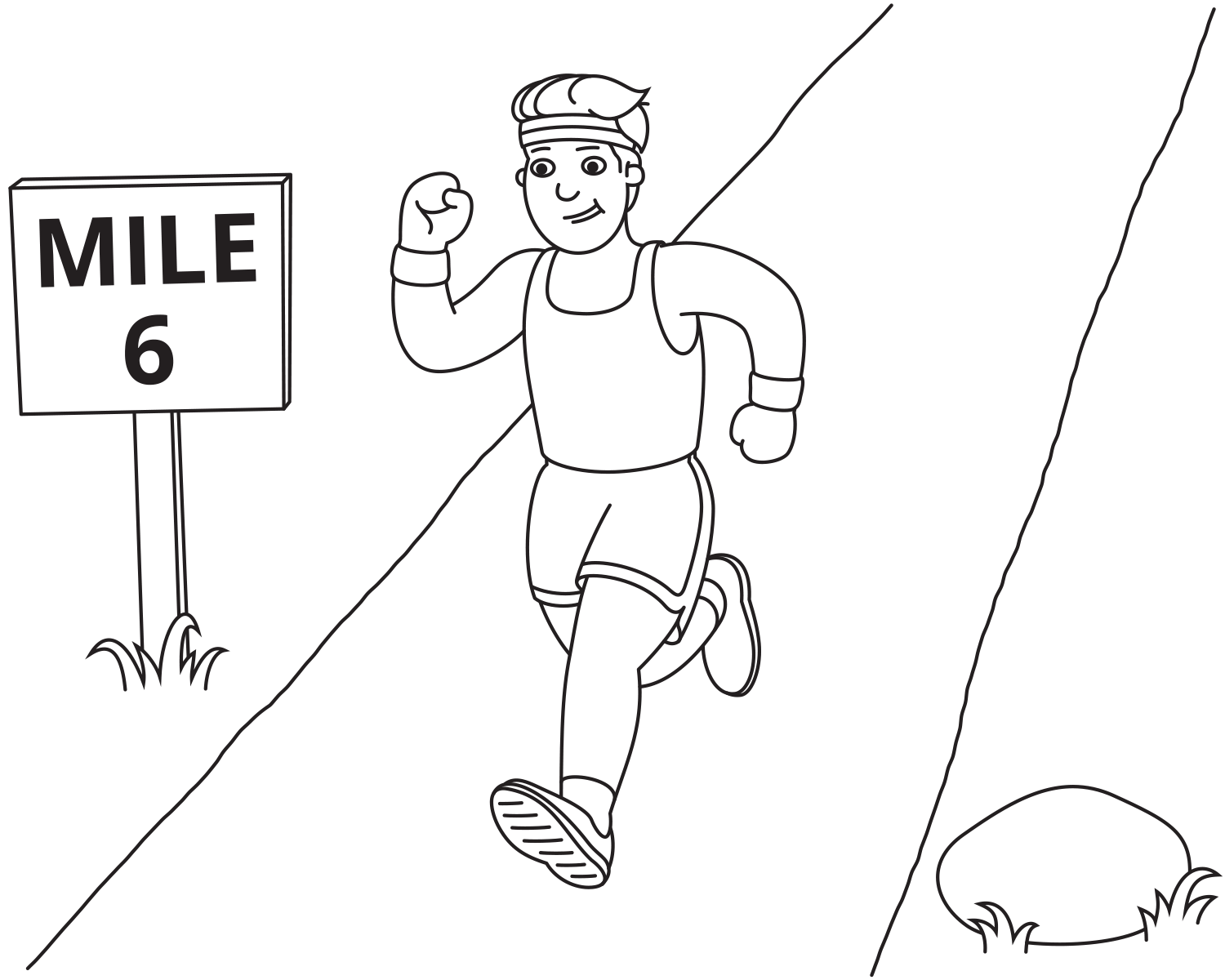Lesson 13
Standard Deviation in Real-World Contexts
These materials, when encountered before Algebra 1, Unit 1, Lesson 13 support success in that lesson.
13.1: Estimation: Marathon Runner (5 minutes)
Warm-up
The purpose of an Estimation warm-up is to practice the skill of estimating a reasonable answer based on experience and known information, and also to help students develop a deeper understanding of the meaning of standard units of measure. It gives students a low-stakes opportunity to share a mathematical claim and the thinking behind it (MP3). Asking yourself, “Does this make sense?” is a component of making sense of problems (MP1), and making an estimate or a range of reasonable answers with incomplete information is part of modeling with mathematics (MP4).
Launch
Display the image for all to see. Ask students to silently think of a number they are sure is too low, a number they are sure is too high, and a number that is about right, and write these down. Then, write a short explanation for the reasoning behind their estimate. Students will need to know the length of a marathon (26.2 miles) and how much time has passed for the runner to make it to mile 6 (70 minutes for this runner). Provide this information when they ask.
Student Facing

How long will it take the runner to finish the marathon?
- Record an estimate that is:
too low about right too high - Explain your reasoning.
Student Response
For access, consult one of our IM Certified Partners.
Activity Synthesis
Ask a few students to share their estimate and their reasoning. If a student is reluctant to commit to an estimate, ask for a range of values. Display these for all to see in an ordered list or on a number line. Add the least and greatest estimate to the display by asking, “Is anyone’s estimate less than \(\underline{\hspace{.5in}}\)? Is anyone’s estimate greater than \(\underline{\hspace{.5in}}\)?” If time allows, ask students, “Based on this discussion, does anyone want to revise their estimate?” Then, reveal the actual value and add it to the display (306 minutes or about 5 hours). Ask students how accurate their estimates were, as a class. Was the actual value inside their range of values? Was it toward the middle? How variable were their estimates? What were the sources of error? Consider developing a method to record a snapshot of the estimates and actual value so students can track their progress as estimators over time.
13.2: Calculate Standard Deviation (20 minutes)
Activity
The goal of this activity is for students to learn how to calculate standard deviation (\(\sigma\) or \(\sigma_x\)) using technology. Standard deviation is a measure of variability. The work in this activity prepares students to be successful in a future Algebra 1 lesson when they have to calculate the standard deviation of data sets.
Launch
Allow students to work individually. If technology is limited, students can work in pairs. Provide access to devices that can run GeoGebra or other statistical technology. Demonstrate how to use the technology available in your classroom to compute the standard deviation of a data set. For the purposes of exploration, use the population standard deviation, often denoted \(\sigma\) or \(\sigma_x\).
Student Facing

Movie A ratings on a 10 point scale:
9, 8, 10, 10, 7, 1, 8, 1, 2, 8
Movie B ratings on a 10 point scale:
9, 8, 8, 7, 9, 7, 7, 9, 7, 8
Restaurant A ratings on a 100 point scale:
88, 87, 89, 90, 87, 85, 88, 91, 86, 86, 88, 89
Restaurant B ratings on a 100 point scale:
90, 65, 89, 50, 94, 93, 95, 95, 75, 70, 88, 89
- Calculate the mean and standard deviation for each data set.
- Based on these statistics, which movie and restaurant would you choose? Explain your reasoning.
Student Response
For access, consult one of our IM Certified Partners.
Activity Synthesis
Select students to share their solutions. Ask students how the standard deviation influenced their preferred movie and restaurants.
13.3: Which Route is the Best Route? (15 minutes)
Activity
The goal of this activity is for students to practice the skill of comparing data sets by comparing standard deviations. Previously, students discovered the importance of variability in comparing data sets when they chose the better choice first, then calculated the standard deviation and reflected on whether or not variability was a factor in their decisions. This activity provides students with the opportunity to calculate the standard deviation and use it to inform their decisions first.
Launch
Arrange students in groups of 2. Tell students there are many possible answers for the questions. Demonstrate how to use technology to compute the standard deviation for each route. After quiet work time, ask students to compare their responses to their partner’s and decide if they are both correct, even if they are different. Follow with a whole-class discussion.
Student Facing
Priya timed the ride from home to school on two different routes.
Here are the times in minutes:
Route A: 21.5, 23, 24, 25, 26.5
Route B: 12, 20, 24, 28, 36
- Before calculating the standard deviation, predict which route has a greater standard deviation. Explain your reasoning.
- Calculate the standard deviation and use it to decide which route you would recommend for Priya.
Student Response
For access, consult one of our IM Certified Partners.
Activity Synthesis
Select students to share the route they chose, including their reasons. The purpose of the discussion is to relate standard deviation to variability and discuss how that is related to consistency in many situations.
If no one mentions it, point out that the mean travel time is 24 minutes for both routes, so the recommendation should be based on the variability.